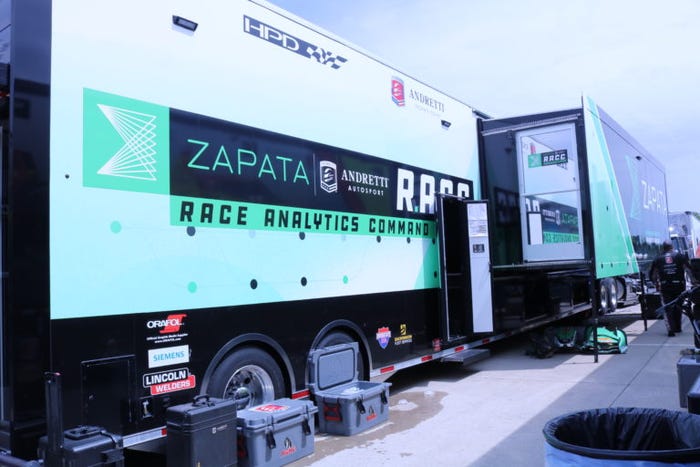
Connects decision-makers and solutions creators to what's next in quantum computing
Q&A with Classiq VP of business development Simon Fried

Rolls-Royce is working with quantum software company Classiq to design quantum algorithms to solve complex computational fluid dynamics (CFD) problems. CFD is a way of simulating how different liquids and gases flow around objects, for example, fuel and air around a jet engine, to optimize aerodynamics and thermodynamics. This is essential to Rolls-Royce, which specializes in engines for civil aerospace and defense, power systems and sustainable energy technology.
In this Q&A, Classiq VP of business development Simon Fried discusses the background to and goals of the partnership and how the program could contribute to sustainability goals.
Enter Quantum: What is Classiq’s USP in the quantum space?
Simon Fried: Classiq is a software platform, and the company is focused on products rather than services at its core. In layman's terms, it's about making programming quantum computers simpler, but also making it possible to program advanced and complex circuits that you otherwise wouldn't be able to.
We enable you to program quantum computers directly from Python or VS Code and then when you have your algorithms set up the circuit is automatically generated. As the output is hardware agnostic Classiq allows you to run it on the quantum hardware of your choice without having to leave our environment. You make quick, state-of-the-art but automated circuits, which is necessary if you want to develop complex or large circuits.
How did the project with Rolls-Royce come about?
It's a relationship that has arisen from many discussions at meetings and conferences. Certain companies, and Rolls Royce is amongst the leading ones, have seen seizing the opportunity to position themselves as strongly as possible in the quantum space.
One of the reasons we see this, and this goes for other customers that we work with as well, is that the evolution of quantum technology is unlikely to be linear. In the quantum world, with each leap of hardware capability, the things that you can do dramatically change. We certainly see that in the finance sector, but it's something that Rolls Royce is aware of as well. The type of work one does today can pay enormous dividends when future hardware is mature.
They're working on it because they have a real strategic interest in not missing out on the moment when that shift happens, as it'll be more binary than linear. Especially for companies confronted with a need to work on large and complex solutions, which go beyond what today's classical computers can manage, future quantum computers can be expected to tackle some of them.
There's a great deal of work yet to be done to fully understand, deploy and leverage the quantum approach to the types of analysis companies want to do. Classiq’s platform enables this research via scalable automation of circuit generation, this allows you to prepare for the future so you can create circuits that go beyond what you could do in your head.
We find that the types of things they're working on, which are strategic to them, are things that our platform can facilitate. In particular, the algorithmic approach to take for CFD leverages HHL, a quantum algorithm for solving linear equations that’s expected to give tremendous speedup as compared with the classical approaches that are used in traditional CFD analysis.
How do you work with Rolls-Royce to achieve this?
The way that the Classiq platform works is that it uses a suite of different plugged-in algorithms that we offer our users alongside automated generation of circuits. The platform isn’t limited to the built-in functions, however. Users are perfectly capable of developing their own approaches as well, if they want to work on functions, and mathematical approaches that they've developed in-house.
CFD is a classic use-case for in the aerospace sector, and generally mechanical things that rotate and spin have to deal with many variables and forces. You find it to an extent in automotive applications also. It can be critical when you're looking at things like fuel efficiency. If we're thinking about CO2, for example, if you're wearing the Rolls Royce hat, you may have emissions targets, and you may have all kinds of competition with the other engine manufacturers in terms of who can get the most miles per gallon out of the out of their jet engine.
All of those flows, how the temperatures and other variables behave when the system is being operated, every little counts, and that's the core of the challenge. You can only go so far with today's supercomputers and classic computers. The acceleration of computational power from quantum computers allows one to take it just that little bit further, which in the context of a jet engine could be very significant
Is CFD one of the ways quantum computing can contribute towards net-zero goals?
You often hear people say it’s about using quantum for meteorology and analyzing the environment as a whole. I think it's going to be about many much more tangible, smaller things, where all sorts of little bits and pieces can be optimized in terms of their efficiency. All of those together can have an environmental impact.
Another way in which CFD is often used is in the analysis of flows, even within batteries, for example. At one end, you're using quantum to make spinning and combustion engine-type applications more efficient, at the other end you could look at how batteries release the energy designed to power things.
About the Author(s)
You May Also Like
.png?width=100&auto=webp&quality=80&disable=upscale)
.png?width=400&auto=webp&quality=80&disable=upscale)




